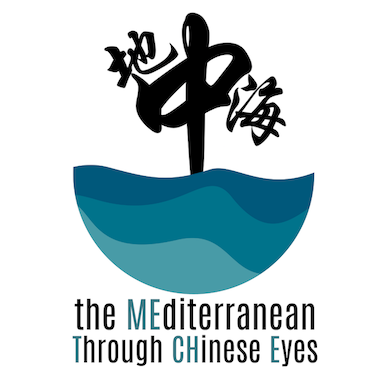Research Project
MeTChE
The Mediterranean through Chinese Eyes:
An Analysis Based on Geographical and Travel Sources
from the Song to Qing Dynasties (960–1911)
Premise
In the light of the geographical, historical, political and symbolic importance of the Mediterranean, both for the ancient and modern world, this region among lands, also perceived as the cradle of Europe (Matvejevic [1987] 1999: 10), has been lived upon and narrated for centuries as a “transcultural space” par excellence, a liquid region that embraces many peoples, cultures and economies, which cannot be enclosed by the traditional concept of national borders (Abulafia 2011: xxiii; Braudel 1985: 8).
Today, foreign investments in the region prove its increasingly strategic role for people living both near and far. However, while its symbolic meaning for European societies is well acknowledged, very few studies have attempted to investigate the perception of the Mediterranean by the Chinese people, exploring its formation, development and relevance.
Approach and sources
In the postnational era, the demand to rethink national borders and embrace inclusive sentiments of shared interests and belonging is prompting scholars to explore new avenues of research. The Mediterranean through Chinese Eyes (MeTChE) project aims to understand how China perceived the Mediterranean as a transcultural space during the Imperial era, specifically from the Song to the Qing dynasties.
Relying on the theoretical approach provided by Mediterranean studies and benefitting from previous case-studies of descriptions of specific European countries and nationalities in Chinese sources, this project intends to take advantage of the Research Units’ competencies in the study of Chinese and Arab geographical and travel literature to investigate the Chinese perception of the Mediterranean from the Song era to the Qing dynasty (960–1911) in geographical works and travelogues written during the last four imperial dynasties. In particular, it aims to assess through which channels and to what extent the Mediterranean came to be described and perceived as a “transcultural space” in China in the concerned period.
Research questions
This investigation is inspired by three key questions:
1. Why should we embrace the concept of a “transcultural” Mediterranean?
2. What are the conventional methods used in researching Chinese sources on the Mediterranean, and why is a fresh approach necessary?
3. Finally, is it appropriate to discuss a “transcultural” perception of the Mediterranean from the Chinese perspective?
The analysis of Chinese sources on the Mediterranean reveals a rich tapestry of cultural interactions and exchanges. Valuable insights come from geographical works, maps, travelogues, and diplomatic accounts that shed light on how China viewed the Mediterranean. Throughout Chinese hystory, notable scholars recorded their observations, weaving together ancient Mediterranean civilisations and historical figures into their accounts. Analysing their works from a transcultural perspective allows us to move beyond traditional national identities and explore the interconnectedness and complexity of historical relations between China and the wider world. Simultaneously, by acknowledging the Mediterranean as a space of converging yet fragmented identities, we recognise its role as a place of coexistence and hybridity, blurring cultural differences and national boundaries.
Methodology and aims
To do so, investigators will collect, classify and analyse, in a diachronic perspective, occurrences of the toponym(s) of the Mediterranean and related excerpts from the selected corpus of Chinese imperial sources by means of a quantitative and qualitative analysis, adopting methods suggested by a transdisciplinary branch of comparative literature known as Imagology (Beller, Leerssen 2007).
Searching for representations of common traits that gather the Mediterranean civilisations, instead of dealing with single countries and national identities, this research’s main objects thus are to:
1) identify to what extent the Chinese perception of the Mediterranean Sea reflected the idea of plurality and transculturality,
2) and trace back the origin of the formation of such impression in previous geographical sources (Arabs and European) along the history of Sino-Mediterranean interactions;
in doing so, it also proposes to:
3) build a preliminary platform of knowledge on Chinese impressions of the Mediterranean in imperial time to be shared with the international scholarship, and
4) enhance the understanding of the historical background for the present economic, political and cultural relations, as to promote a positive dialogue between the two poles of the Eurasian continent.
Our intention in the next two years is to draw an outline of the perceptions and representations of the Mediterranean transcultural space in order to “de-border” the study of Sino-Western, especially Sino-European, contacts. This should be achieved by looking at the larger system of shared culture and enhancing common elements emerging from the encounter of civilisations across history.
This will show us how borders and geopolitical partitions varied throughout history, including elements of non-material culture such as the circulation of ideas (e.g. common traditions and beliefs, mythology, scientific discoveries or inventions) as well as material culture (trade and goods circulation, one of the main catalysts of human mobility and interest toward “the other.”)




